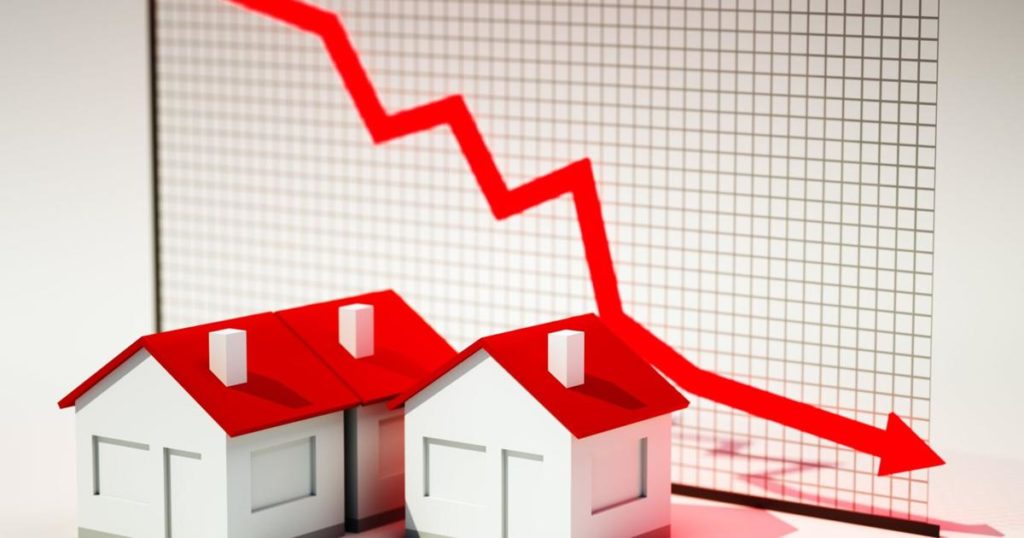[ad_1]
Valley homeowners who are hoping to sell their house appear to be heading for rocky water, according to several reports last week.
The Cromford Report, a leading analyst of housing market trends in the Maricopa and Pinal counties, said one of the biggest factors threatening to dethrone sellers from the catbird seat they‘ve enjoyed in negotiations for several years is a mix of rising supply and falling demand.
“Demand continues to fall in most areas but the dominant effect is now the rise in supply, with new listings arriving at a pace that is well above average,” it said, predicting that Buckeye, Queen Creek and Maricopa already are close to a balanced market, where bidding wars have evaporated and sellers no longer can call all the shots.
Nevertheless, the news also doesn’t offer much hope for buyers looking for “moderate” prices. Indeed, the meaning of “moderate” may not be at a new normal in the Valley and elsewhere in the country.
“The upper end of the market is slowing, but to a lesser degree than the mid-range between $400,000 and $1 million,” the Cromford Report said. “Supply below $400,000 remains very low and that segment of the market remains strong.
Cromford said that data from May sales drawn from County recorder records show closed sales dropped 11% from where they were in May 2021 regardless of whether the deals involved new or used houses.
Even so, the overall median sales price in the Phoenix Metro area last month was $490,000 – up 24.8% from May 2021 with the new home median at $500,490 (up 27.8% over May 2021) and the median for resales at $486,000 (up 23.7% from May 2021), The Cromford Report said.
Those Valley price figures far exceed the national median sales price of $428,700 in the first quarter of 2022, although that nationwide number is up 30% from $329,000 in the first quarter of 2020. Mortgage rates jumped from 2.75% in the fall for a 30-year fixed to over 5.25%.
An even more staggering blow to those in search of affordable homes, according to the real estate brokerage Redfin is that 8.2% of homes – about six million houses – are valued at $1 million or higher – double what those figures were two years ago.
Realtor.com said “Pandemic-era prices, as they currently stand, may be here to stay.
“It is entirely possible that prices level out and just don’t change very much for the next few years,” Greg McBride, chief financial analyst at personal-finance site Bankrate.com, told Realtor.com. “This would benefit first-time buyers by allowing their incomes to ‘catch-up’ to the cost of homeownership somewhat, but this would unfold over a two- to four-year period, not the next two to four months.”
McBride cautioned would-be buyers who hope for a significant price correction: “Sellers have been putting homes on the market and asking for moonshot prices. In a neighborhood where homes were selling for $600,000 one year ago, a seller may now be asking $800,000. Sure, they may need to cut the price a bit and eventually sell for say, $725,000, but that is still much higher than the $600,000 it would’ve sold for one year ago.”
Meanwhile, both the Cromford Report and MarketWatch.com kept a wary eye on the overall economy and how that might impact the housing market.
MarketWatch said the U.S. housing sector might be heading for the biggest slowdown in a decade, citing Len Kiefer, deputy chief economist for Freddie Mac.
“The U.S. housing market is at the beginning stages of the most significant contraction in activity since 2006,” he said, adding:
“I don’t think that home sales are going to grind to a complete halt. They’ll just slow. People will still be able to sell homes, but it may take you just a little bit longer than what it’s been.’
He also was quoted as saying, “It hasn’t shown up in many data series yet, but mortgage applications are pointing to a large decline over summer,” and that mortgage applications already have tumbled 40% from their most recent peak in 2021.
Purchases and refinance applications are in fact down to the lowest level in 22 years, Realtor.com said.
Mortgage applications as a data point “gives you a sense of where the market might be headed,” Kiefer told MarketWatch, “because that’s the early stages of when people are looking to buy a home. And if the volume of applications falls, that tends to indicate that in a month, month and a half, mortgage originations of home closings will also decline.”
Kiefer expects home sales to henceforth “slow quite a bit over the summer.”
Meanwhile, the Cromford Report called May sales data “worrisome” because of a 16% year-over-year decline in home sales in the Phoenix Metro market.
“This leads me to conclude that the market is serious about this change of direction and the new trend is likely to continue for some considerable time,” it said.
“There are two things that concern me about the sales decline in 2022,” it continued: “It is taking place in May, which in a healthy market should be one of the busiest months for closing.
“We are seeing a very steep drop in a short period. In this environment, selling a home is no longer like falling off a log. Showings will be fewer in number and offers far less easy to get than they were in March. Once buyers realize what is going on, expect them to start flexing their negotiating muscles. They might even ask for the seller to pay for a home warranty (shocking, I know).”
[ad_2]
Source link
